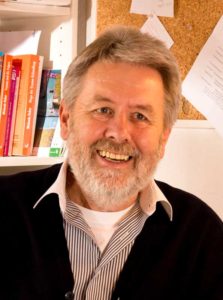The question of the meaning of life
Author: Dr. Sylvester Walch
Dying is an indispensable part of human life. There is no way around it and it affects everyone. Yet in our society there is more silence about death than about any other topic. For transpersonal psychology, dying is an essential point of reference. For the maturation and development of human beings in many respects. From so-called ego-death to near-death experiences to the death of the human body.
The question of dying confronts us with the question of the meaning of life, which comes up by the fact that our existence is finite. From this knowledge of death the need to find the value of life also arises.
So whoever includes death in their consciousness expands and enriches their life.
Death is not the enemy of life, but rather its indispensable point of reference around which life can be built and organised as a meaningful event. First, I will explain what I mean by the term „transpersonal“ and what the transpersonal psychology I refer to is about. Then I will go into the peculiarity of experiencing dying. One aspect will come before:
Dying means learning to let go radically.
But this is only possible if we can relate to something to which we entrust ourselves.

TRANSPERSONAL PSYCHOLOGY
Abraham Maslow, a co-founder of humanistic psychology, introduced the term „transpersonal“ in 1969 by in his famous article „The Reach of Human Nature“.
In his research on fundamental aspirations and motivations, he found out how important the need for self-realisation is for man, for
»man is not only what he is, but also what he could be.«.
In order to explore this, he examined people whom he classified as self-realised. He discovered that for them it is not personal happiness, as is often misunderstood. But rather values such as humanity, liveliness, truthfulness, openness, goodness and holistic responsibility. In addition, the test persons reported peak experiences as states of spontaneously expanded consciousness and flow sensation. As well as the experience of transcendent connectedness similar to the unity experiences described by mystics. In order to classify these phenomena, Maslow first used the term trans-humanistically, which he then replaced with „transpersonal“ (Maslow, 1994). This goes beyond the limits of personality, and to free it from psychopathological interpretations.
THE CORE CONCERN OF TRANSPERSONAL PSYCHOLOGY
The extended view of transpersonal psychology helps us a lot to deal with the challenges and processes of aging that are essential to the phenomenon of mortality.

Odo Marquard advises us in the booklet „Finiteness Philosophy“ not to want to turn back the wheel of time by senile ambition. He encourages to gradually give priority to „that is so“ over „that is how it should be“. If we meet these limitations with a portion of humour and self-irony, we can confidently face reality. And at the same time allow ourselves to undercut ourselves.
This also protects us from overstrain stress, which results from the misjudgement of our own capabilities and illusionary expectations of the future.
The tightening time horizon in old age makes it advisable to adapt one’s own life rhythm accordingly. On the one hand, it is necessary to shift down a gear. This means that I no longer want to achieve everything that I may still have set myself. On the other hand, it also means tackling what really seems important or necessary to me, in a targeted manner and as immediately as possible and concentrating on the essential.
NEAR-DEATH RESEARCH
LEARNING TO LIVE – LEARNING TO DIE
On the other hand, the fact known from brain research that such states, as well as mystical unity experiences in deep meditation, can be evoked at any time by stimulating certain brain areas, is not yet proof that these are delusional ideas. It only proves that intense psychic and spiritual phenomena can also be triggered by physical interventions, and of course vice versa.
The renowned neurobiologist Gerhard Roth also admits this:
»Ultimately, the above-mentioned findings only mean that it is obviously part of a person’s mental equipment to have religious, spiritual or mystical experiences under certain conditions. It does not necessarily follow that such experiences have any real connection. Nor does it necessarily follow that belief in God or in an afterlife is pure illusion.“ (Roth, Gerhard, 2003, p. 191)

Seneca already put it in a nutshell:
»To learn to live, you have to learn to live your whole life, but what you may wonder about even more, you have to learn to die your whole life.«
Only when we get more and more involved in the risk of „dying and becoming“ are we able to free ourselves from the fixation on our ego. And also to anchor ourselves in our higher self, which is able to carry us through even the most difficult phases of life.
About the author

Sylvester Walch, Dr., born 1950. Studied psychology, psychiatry and philosophy. Teaching therapist for Integrative Therapy and Integrative Gestalt Therapy. Head of the Curricula for Transpersonal Psychotherapy and Holotropic Breathwork as well as Body-Related Psychotherapy. For many years he managed an inpatient psychotherapeutic institution and has teaching assignments at various universities. He has written numerous scientific papers and books, including The Fullness of Your Life, From Ego to Self, and Subject and Reality. Sylvester Walch has many years of meditation practice and has developed a cross-cultural psychospiritual path. Within spiritual healing and spiritual practice are combined. Honorary Chairman of the IHTP.
Photo credits: © Adobe Photostock
This article was originally published on the German Homepage of Tattva Viveka: Der Weg der Mitte





